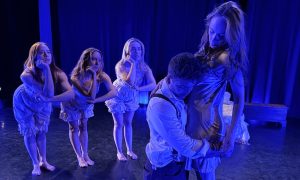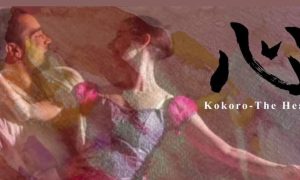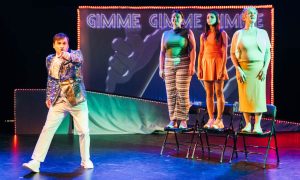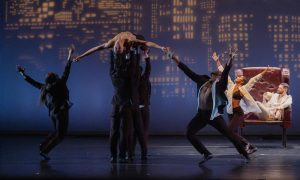The Elks Club, Newport, RI.
October 19, 2025.
Synchronicity in the moving moment – unspoken connection – takes knowing each other. Yet, when they’re called to it, skillful artists can find that deep knowing quickly. Newport Contemporary Ballet has many new dancers this year – seven out of a company of 13 (including two new trainees). Yet, in the company’s 2025-26 Season Opener Creatures of Habit, it seemed like they’d all been dancing together for years.
That cohesive quality in the ensemble was one thing, along with all-around seasoned, thoughtful artistry, that allowed the program’s weighty themes to fully resonate: themes of behavior patterns, intimacy, tender wildness and more. The result was me leaving the venue with a brain chewing on big questions and an aesthetic sense fully sated.
In addition to the below, I enjoyed re-experiencing Emily Baker’s Crushed (2025) and Danielle Genest’s Harbingers (2019). Baker’s work was in the perfect environment for its premiere this summer, on an outdoor stage in beautiful summer weather, yet I still very much enjoyed its rigorous fun this time. Harbingers is full of nuances that leave interpretation open to individual dancers, and it was fascinating to see two different dancers (Margot Aknin and Lauren Difede) approach that for this restaging.
Ilya Vidrin’s If Only served as a tenacious yet also soft opener. Sarah Murphy and Nathan Crewe-Kluge stood facing each other, sharing weight and exploring the other through delicate gesture: a hand across a collarbone, over a shoulder, down an arm. The rest of the ensemble also supported each other’s weight through resting heads on each other as they lay, curled with knees into chest, simply breathing.
These elements of visceral support, tender touch, and kinetic exploration rang from this beginning to the work’s end. That exploration moved out across the space, as well as evolved into that of the self (particularly with Murphy’s persona): intriguing variations on the theme. Connection rippled as the ensemble took on Murphy’s movement phrase, the individual impacting the collective.
All of these layers took their time to transpire; even when the tempo picked up, nothing felt rushed. That allowed me to absorb and appreciate all those layers, the lush meaning therein, rather than feeling like I was missing things. Also evocative was lighting of bright lines breaking through shadow, like water refracting underwater (an aesthetic idea characterizing the backdrop as well – clear visual confluence).
Reflecting Vidrin’s theme of the “shifting landscapes of intimate attachment”, pas de deux partners again took the stage: receptive and easeful, yet also assured and clear through every gesture and movement pathway. Back to ensemble sections, dancers expanding across the back with an exhale and opening the solar plexus again with an inhale, that meeting of the soft and strong remained. That most often characterizes integrated, pleasing movement, yet here also supported the theme of the complexities within intimacy, the wide range it can contain.
Later, dancers moved and gazed together, all facing stage right: together meeting an outside force. More inwardly-directed movement followed – surfacing another intriguing duality, that of the inner and outer. Vidrin sought to explore the “delicate balance between habits that anchor us and those that trap us.” That had me thinking about the work’s repeated gestures that were more internally-directed, smaller and less athletic; how much did they anchor, and how much did they trap, the work’s personas?
As it ended in a full-circle to the beginning, with the pas de deux pair standing facing each other again, that question felt poignant – not to be answered right then, but to be pondered and marinate in the subconscious.
If the work were to be developed further, I’d be curious what could happen if some of the jerkier and more accented movements were refined, lessened, or eliminated entirely; they didn’t resonate with me as much as other qualities therein. Yet apart from that, in addition to such potentially rich meaning, the work fully satisfied my visceral and visual senses. I hope to see more from Vidrin soon!
Mark Harootian’s Familiar Weight came second to last, a bold and indelible kinetic exploration of “bad habits and the emotions behind the struggle to end them.” Dancers accumulated from one – the commanding, yet also easeful Grace Byars – to a whole ensemble. They picked up her movement vocabulary, and I immediately felt a sense of weightedness in how they moved.
They also danced with precise accent and shape of gesture. Spiraling turns offered contrast. The dancers expanded into space with energized reaching, almost with a sense of yearning – that which can arise when we grasp at ways to stop doing what we know doesn’t serve us. The score (from Yann Tiersen) – highly rhythmic and full of mysterious, almost mournful tones – supported all of those qualities.
I also noticed breath as a key theme. Dancers noticeably filled with breath as they expanded and emptied of it as they released energy inwards. At other moments, they drew splayed fingers before their faces as they inhaled. Breathing is natural and automatic, yet we can also learn to lengthen it, smooth it out, ease it. Might we also do the same with our habits – those that we find ourselves in naturally, yet can also shape to be more supportive of wellbeing?
Other movements were more athletic – entrancingly so. Two dancers criss-crossed the stage, devouring space and time in movement. Turns and lengthening through larger ensemble sections did the same, even all the more so through additional dancers. Sometimes bettering ourselves takes tenderness, and at other times hard work.
As with If Only, there was also both inwardly and outwardly directed movement: that expansive athletic movement on the one hand, and intricate gestures close to the body on the other. In this work, that spectrum had me thinking about how a successful journey to improve our habits requires outward support, but some of the work we assuredly must do ourselves.
On an aesthetic level, these different qualities became all the more impactful through contrast. The ensemble worked together to realize them all, attuned to each other as they danced through highly complex movement pathways and formation changes. It was another premiere that both pleased my senses and got my mental wheels turning – success!
Danielle Genest’s Nest closed out the work: both soothing and enervating, evocative and abstract. Dancers began in a tight circle, arms fluidly reaching to initiate movement. They soon moved outwards to fill the stage, with timing and spacing such that the many layers at hand felt accessible.
A sometimes frenetic, yet ultimately highly organized multiplicity hummed – something that also characterizes nature. The ensemble vibrated with the unspoken connectivity within an organism, social unit, or larger ecosystem. Genest described a theme of nests, which “symbolize family and community” – and that imagery rang true (such as in the opening circular clump).
I also saw water imagery, from dappled blue costumes to gestures moving long and fluid like seaweed. Timing ebbed and flowed like the tide: changing yet also continuous, as well as cyclical. That’s a common conceptual direction for this company, and fittingly enough – being based in Rhode Island’s “city by the sea.” Either way, once again the dancers demonstrated a notable attunement to each other – in timing, shaping, formation, and more.
Lauren Difede danced a memorable solo of both expansion and gestural intricacy – lifting in a smooth turn and then grounding to sensitively gesture. The artistic maturity that she’s developed over her years in the company was on full display. Genest’s choreography, for its part, was as satisfying as ever: viscerally keen, receptive, and tenacious without anything like flash for its own sake.
The interconnected wild community gathered again towards the end, circling to recreate the tightly-knit nest. Nature’s cycles – of waking and sleeping, of birth and death, of movement and stillness – persist. This work was a poignant reminder of that truth, particularly after the focus on the complexities of emotions, relationships, and habits in the program’s earlier works. Whatever happens in any of that, the sun rises again.
Indeed, the dancers together lifted the solar plexus and gazed skyward as the piece closed. Perhaps in that persistence of life is hope…unquenchable hope. Bad habits can seem intractable, relationships are hard, and intimacy can feel quite abstruse – yet the new days keep coming. So let’s not take anything too seriously; life goes on.
All of that conveyed primarily through bodies in space: concert dance truly is a wonder. Thank you for that reminder as well, Newport Contemporary Ballet! Particularly with this almost fully new company, I very much look forward to seeing what else they have to share – this season and beyond.
By Kathryn Boland of Dance Informa.
